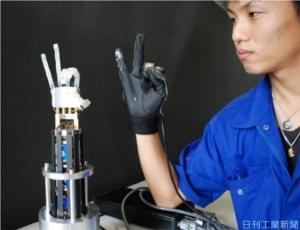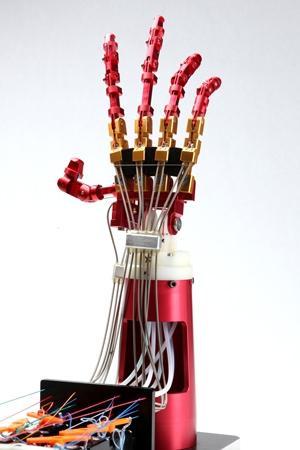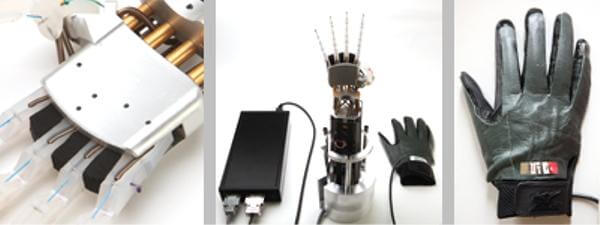
If you’ve never thought about describing a robotic limb as sleek and sexy then you’ve never met Handroid. The latest production of Japan-based ITK, Handroid is a five fingered robot hand that moves smoothly using cables attached to motors in the forearm rather than bulky servos embedded in each digit. That design allows Handroid to be lightweight (just 740g) as well as move in a decidedly human manner. Currently, Handroid is remotely operated using a glove, allowing you to flex each robot finger as easily as you do your own. Check out the Handroid in action in the video below, followed by some great pics of the device. One day this robotic hand may allow human workers to handle dangerous materials from the safety of their office, and other models are planned as prostheses for amputees. Hope you like the look for Handroid, because we’re probably going to see a lot more of it in the future.

As cool as Handroid may appear, ITK is entering into some dangerous competition with this device. Robot hands are everywhere, and many have impressive credentials that will be hard to beat. We’ve seen the glove-control before with Shadow Hand, and Tsukuba University did it one better by using cameras to create a system that tracks your hand movement visually. While ITK is still in early stages of being adapted to become a prosthesis, other companies have working models ready for sale. i-Limb has an $11000 robot hand you can wear today that uses myoelectric signals detected in nerves left in residual muscle under the skin. The Smart Hand directly links to nerve endings in your arm, and researchers are already working on hands that connect to electrodes wired into your brain. ITK is exploring options for myoelectric, cerebral, and muscular nerve signals to control Handroid, but we’re probably looking at years of work before such controls could be developed.
The saving grace for Handroid may be its cost. Robonable reports that ITK plans to sell the device in the next two years for around 500,000 Y (~$6500 USD). That’s a great price, especially considering that other lightweight cable-based hands like the one made by DLR cost upwards of $100,000. I’ve less of a feeling of whether the pulley system, rather than embedded servos, is that much of a selling point for Handroid considering how servos become lighter and more efficient every year. True, Handroid moves really smoothly when compared to the competition, but ultimately I think it will be price that determines who wins in the race to develop prosthetic and robotic hands.
If the video didn’t satisfy your lust for Handroid imagery, here are few more pics for you to enjoy.


[image credits: ITK]
[sources: ITK (En), ITK (Jp), Robonable]



